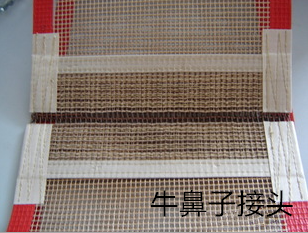However, through the in-depth exploration of the industrial chain, it is not difficult to find that export-oriented LED companies benefit from cost advantages, technological level development and broad overseas market space. The future growth rate is still good.
LED display has cost advantages
From the perspective of the LED display industry, domestic enterprises have certain cost advantages over foreign companies. At present, the domestic LED display price is about 30%-50% of similar foreign products, but still can maintain a better gross profit margin, mainly due to the cheap domestic basic materials and VAT refund policy. These two factors make the domestic LED display cost about 30% of the cost of foreign LED display, and the low cost has greatly improved the competitiveness of domestic products.
At the same time, the use of domestic lamps has also greatly reduced the cost. From the cost structure of domestic LED display, the largest proportion of LED lamps, the basic proportion of 39%. Domestic display companies mostly use domestic LED tubes, or package their own LED tubes, while foreign companies such as Buck and Daktronics use the lamps of international manufacturers (Nichia, Cree). The data shows that the domestic LED lamp price is about 1/3 of that of international manufacturers. If other domestic and international costs are assumed to be the same, the domestic display cost is about 44% lower than that of international manufacturers only because of the price difference between domestic and foreign lamps.
In addition, the average foreign wage is about 7 times that of China. If other costs are assumed to be the same, only the labor cost, the overall cost of domestic displays is 17% lower than that of foreign countries. The gap between domestic and foreign products, such as empty box, steel frame and PCB board, is relatively large. Together with the overall design cost, the cost of domestic products is about 30%-50% of foreign products. Domestic LED display exports will enjoy a 17% VAT refund, and it is estimated that government support will further reduce costs.
Domestic market is limited, overseas market is vast
After experiencing explosive growth in 2010, the overall growth rate of the LED display industry will decline significantly. According to the High-tech LED Industry Research Institute (GLII), the growth rate of the domestic LED display industry market has dropped to about 10% in 2012. It is expected that the domestic LED display industry growth rate will remain at 10% in 2013-2015-20 % low. But compared to this, exports have maintained a relatively high growth rate. It is not difficult to find out from the data of various enterprises. Although the overall growth rate has slowed down, the export situation is obviously better than the domestic sales. Among them, Lehman Optoelectronics, Alto Electronics, and Liede's sales revenue growth rate in 2012 were all greater than 30%, while the growth rate of domestic business sales revenue of most companies remained basically between -10% and 10%.
At present, the technical level of domestic and foreign enterprises has been basically the same. From the perspective of end customers and downstream applications, Ai Biesen, Lian Jian Optoelectronics, Lehman Optoelectronics, and Chau Ming Technology have all undertaken a large number of large-scale projects. From large-scale exhibitions to sports centers, to the Bird's Nest and Expo Expo screens, it can be said that although there are still some gaps between domestic LED displays and foreign manufacturers, in addition to ultra-high-end products, the display screens of domestic LED lamps can meet the requirements.
In addition, the LED display screen has an export space of about 60 billion yuan, which is enough to support the rapid development of enterprises. In terms of market size, the global LED display market in 2013 was 13.7 billion US dollars, about three times the domestic market. In the future, domestic LED companies will develop rapidly with their high cost performance.
From the perspective of industry leaders, at present, the industry leader Dako's 2012 sales revenue is as high as 500 million US dollars, equivalent to more than 3 billion yuan. The largest sales revenue of domestic related listed companies is only 570 million yuan. Obviously, the entire industry has the potential to breed large companies, and subsequent domestic listed companies are expected to have greater room for development.
(This article is reproduced on the Internet. The texts and opinions expressed in this article have not been confirmed by this site, nor do they represent the position of Gaogong LED. Readers need to verify the relevant content by themselves.)

Bull nose is a common connecting way of Conveyor Belt, which is named for its shape.
The joint mesh is made of Kevlar coated with Teflon dispersion, whose technical is similar to PTFE open Mesh Conveyor Belt.
Compared to PTFE fabric conveyor belt, bull nose is much more suitable for open mesh conveyor belt, and easy to install and to repairing. In addition, the price is more competitive than alligator joint. Besides, the conveyor belt with bull nose can apply in micro wave situation.

PTFE Conveyor Belts With Bullnose
Industrial Conveyor Belts,Conveyor Belt With Bullnose,Mesh Conveyor Belt With Bullnose,PTFE Conveyor Belts With Bullnose
TAIZHOU YAXING PLASTIC INDUSTRY CO., LTD , https://www.yaxingptfe.com